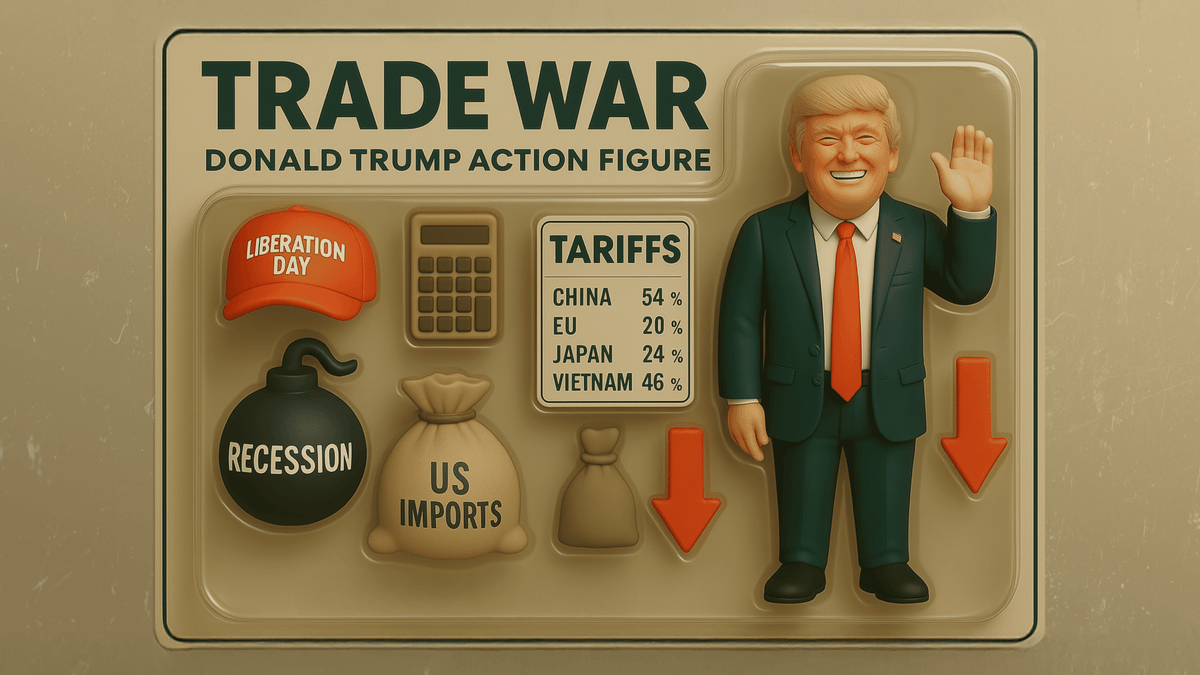
The winner takes it all

Just when we thought that we escaped the pandemic, war brings death’s shadow back. The Russian invasion of Ukraine destroyed the fragile geopolitical equilibrium and threw financial markets into confusion. The strike was well prepared by the Kremlin, which seems to have assessed both political and economic consequences of their acts. Is there a bigger picture behind this conflict? Who will be the real winner of the Ukraine war?
Two years ago, in the early days of the pandemic outbreak, we had painted the situation using the metaphor of the four horsemen of the Apocalypse. The first horseman brought a ravaging pandemic, and the second came with a war message. Needless to say, the second horseman is Russia’s leader Vladimir Putin. Putin has not only pushed the world to the brink of a global war but has also triggered what seems to be a global economic war.
Despite its ambitions, Russia is far from being a global economic power. While its leader has a reverie about the glorious forgotten past of the Soviet Union, Russia’s economy is highly dependent on commodities trade. So, who will back Russia economically and financially in the foreseeable eventuality of a new Iron Curtain between Moscow and the West?
The second horseman rides with the flag of economic war, and the symbols on his flag war are in Mandarin. The trade war between the United States and China enters the phase where proxies are activated. The Kremlin plays a tactical role in this trade war and aims to trigger a massive disruption in the global supply chain and generate shortages in commodities markets.
Beijing is watching Taiwan with envious eyes, and any escalation of the
conflict in the region would amplify the global chip crisis.
Financial
markets are overly optimistic with respect to the impact of the Ukraine war
on the global economy.
Nevertheless, both Moscow and Beijing want to trigger turmoil in financial markets that would eventually lead to a global recession.
The military aggression unfolded just a few days before the long-awaited interest rate hike announced by the Fed for March. Most likely, the Fed will revise the tampering strategy.
The situation in eastern Ukraine has undergone rapid changes, drawing great attention from the international community. China’s position would be based on the right and wrong in relation to the Ukraine issue itself. China is consistent in the fundamental position on respecting the sovereignty and territorial integrity of all countries and abiding by the purposes and principles of the U.N. Charter. Xi Jinping, Chinese President
Market overview

The leading equity indices plunged significantly after the Ukraine invasion, but recovered in the last trading session. On Friday, the Dow Jones delivered a strong comeback, climbing 2.5%, a one-year record for a daily return. Investors priced in that The White House will not go to war with Russia.
Crude oil prices dipped below USD 92 after a sudden spike above USD 100 amid the Russian invasion. VIX, the leading volatility index, remained surprisingly at relatively low levels. The consequences of the war are not yet fully priced, and markets could move into a more turbulent territory.
Focus:
Gazprom

The Ukraine conflict is sealing the fate of the Russian economy for the next decade. Gazprom shares plunged 50%, hitting a record low in the early hours of the Russian invasion. Gazprom is Russia’s biggest company and controls the gas exports, representing the Kremlin's main revenue source. Turmoil in oil and gas exports are triggering already a loss of confidence towards Russian governmental debt.
Standard and Poor lowered Russia’s sovereign rating to “junk status” while Moody’s is considering doing the same in the following days.
Commodities:
Gas

The Ukraine-Russia conflict unleashed agony in the global gas market.
The Dutch TTF, Europe’s leading gas price benchmark, jumped by more than 50% on the first day of the invasion. The Asian LNG markets were hit severely by the conflict.
The Japan Korea Marker, Asia’s main LNG index, had a four-fold increase, Russia being one of the main gas exporters in the region.
This massive spike in gas prices is a mix of sentiment trading and
structural changes in fundamental supply-demand equilibrium. The conflict
could push the global gas markets to reach unforeseen high-level prices.
Such an effect could trigger a further increase in inflation.
Market outlook
After a bumpy ride marked by a few significant swings, the Dow Jones Index ended the week into negative territory, above 34,000. The war between Ukraine and Russia ignites the market turmoil and could trigger a future bearish pattern.
Bitcoin ended the week near USD 39,000 after dipping below USD 34,500. Bitcoin follows a pattern correlated to the stock market, which exposes the leading cryptocurrency to systemic risk. The war in Ukraine and the interest rate hike could generate new price corrections, and Bitcoin could test the USD 30,000 level over the next month. Nevertheless, if Russia is cut from SWIFT, cryptocurrencies could deliver robust gains.
The Gold ounce ended the week on a negative note, below USD 1,900 after climbing above USD 1,970. The foreseeable commodities crisis and the inflationary context are good arguments for a rally in gold prices.










General Disclaimer
This content is for informational purposes only and does not constitute financial advice or a recommendation to buy or sell. Investments carry risks, including the potential loss of capital. Past performance is not indicative of future results. Before making investment decisions, consider your financial objectives or consult a qualified financial advisor.
Did you find this insightful?
Nope
Sort of
Good




%2FfPNTehGpuD8BdwDeEEbTF2.png&w=1200&q=100)
%2FgRTFfWwPmcWyE8PFfywB82.png&w=1200&q=100)

%2FAD2MfhoJXohkTgrZ5YjADV.png&w=1200&q=100)

%2FjjqkumDfGjhNxroL253Hc4.png&w=1200&q=100)

